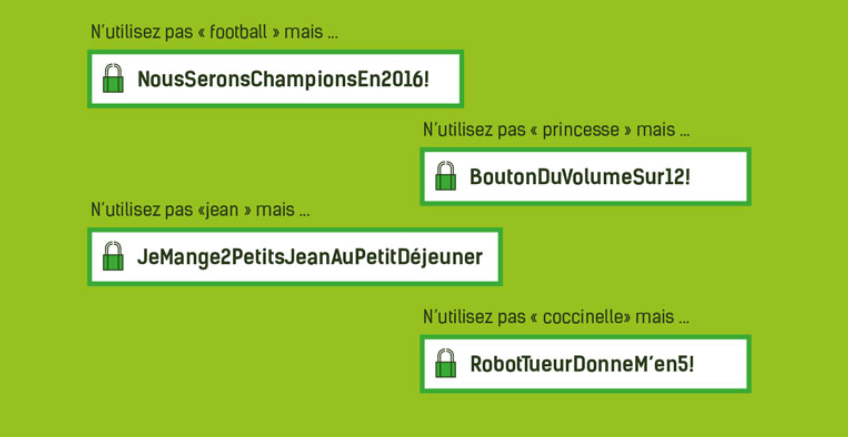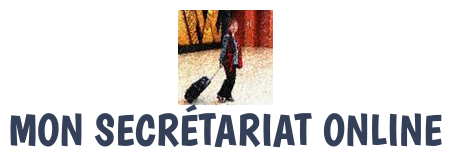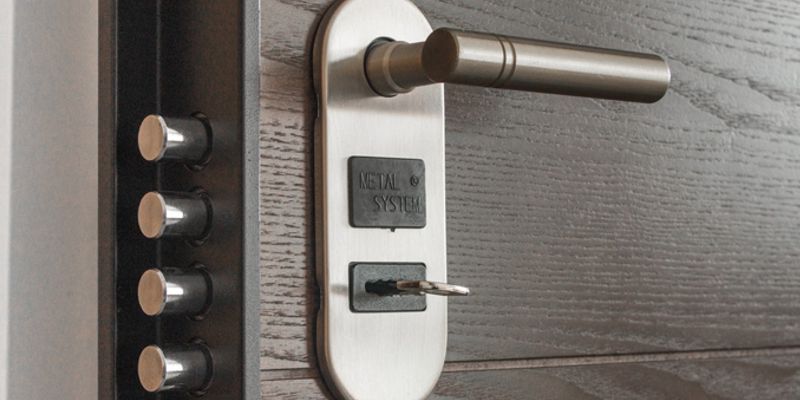Le Mot de passe est une protection supplémentaire sur le chemin de vos données. Encore faut-il qu’il soit solidement conçu…
Votre mot de passe devrait :
- Avoir un minimum de 8 caractères (plus c’est long, mieux c’est)
- Contenir un ou plusieurs chiffres (0-9)
- Être constitué de lettres majuscules (A-Z) et minuscules (a-z)
- Contenir au minimum un signe spécial (!, @, +, -, /, … etc.)
- Ne pas être un nom commun comme « soleil », « maison », « chien » et donc ne pas faire partie du dictionnaire.
- Ne pas se rapporter à votre personne (votre numéro de téléphone ou de plaque de voiture, votre date de naissance ou celle d’un membre de votre famille… etc.)
- Ne pas avoir déjà été utilisé (ancien mot de passe)
Votre mot de passe est-il assez sûr ?
Combien de temps, pensez-vous qu’il faille à un hacker pour briser la barrière de votre mot de passe et accéder à vos fichiers ?
1 an … 1 heure… ou moins d’une seconde ?
Il existe plusieurs sites où vous pouvez tester des mots de passe fictifs de votre cru et prendre conscience de leur fragilité face à une attaque. Je vous en ai sélectionné deux :
- Password Kaspersky Lab
- How Secure Is My Password (site en anglais)
N’hésitez pas à tester d’anciens mots de passe que vous n’utilisez plus, ou des mots de passe que vous avez songé à utiliser.
ATTENTION PRUDENCE !
N’utilisez aucun mot de passe existant !
On ne sait jamais qui est derrière un site ou une application internet. Et ce n’est pas parce qu’il semble bien fait et que je vous les recommande, qu’il ne faut pas se méfier.
J’ai testé les mots de passe suivant :
- Love >> peut résister de 0 seconde à 7 minutes
- 12345678 >> de 0 seconde à 3 heures
- 11111111 >> de 0 seconde à 3 heures
- Qwertz >> de 0 seconde à 4 heures (ligne du haut du clavier
- yxcvbnm >> de 0 seconde à 6 heures (ligne du bas du clavier)
- Password >> de 0 seconde à 3 ans
- Singe >> de 4 minutes à 9 heures
- s5in&Ge >> de 4 mois à 53 ans (singe avec 1 chiffre, 1 symbole et 1 majuscule)
- S+r754sg >> de 4 ans à 5000 ans
- Jenesaispas >> de 6 ans à 923 siècles (phrase de passe de 11 caractères)
- tttttttttttttt > > de 8 minutes à 222 siècles (lettre répétée 14 fois)
En conclusion…

(Photos : CC0 @ pexels.com)

